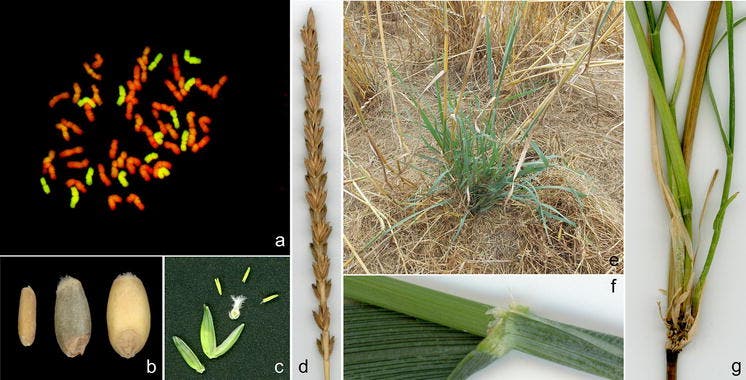Come spring, wheat farmers all over the world have to tediously start sowing millions of seeds to prepare for the next crop. It’s very annoying but farmers have gotten used to it after a couple thousand years. This is set to change, however, if the creation of researchers from Washington State University is to ever catch on. Essentially, they’ve created a new wheat species called Salish Blue that’s a hybrid between annual wheat and perennial (self-planting, self-regenerating) wheat grass, also known as wild grass. As an added bonus, the new grain is blue-hued.
The work was carried out by Colin Curwen-McAdams, a graduate research assistant at the WSU Bread Lab at Mount Vernon, and Stephen Jones, wheat breeder and director of the lab.
“Perennial grains add value in ways other than just being wheat,” said Curwen-McAdams. “What we need right now are crops that hold the soil, add organic matter and use moisture and nutrients more efficiently. That’s the goal of this breeding program.”
Because the soil isn’t empty for half the year, a perennial crop will enhance the soil’s quality thanks to its deeper roots and lower energy/fertilizer input requirements.
Almost 75% of all food crops farmed in America are annual, requiring reseeding after each cycle. Not only is this a huge hassle that costs billions but annual crops can also erode the soil because fields lie fallow and inactive most of the time. Because the water, air, and overall quality of the soil are better where perennial crops grow, the grains can be expected to be more nutritious and healthy.
The current hybrid, Salish Blue, was 21 years in the making. It’s the product of years and years of work as scientists battled to stabilize the hybrid through classical plant breeding without using gene modification. The challenge was to somehow make three different genomes reconcile with each other.
“It’s incredibly difficult to get what qualities you want, and hold on to them over generations, while not bringing along other things that aren’t desirable,” said Jones.
For now, Salish Blue (×Tritipyrum aaseae) grows only on a small plot of land on the university’s 500-acre farm to the sole enjoyment of organic dairy cows. Curwen-McAdams says the grains aren’t yet vetted for human consumption but that didn’t stop him to make shortbread and pancakes out of them. And yes, these were blue pancakes!
“Pancakes are my favorite thing to do with it,” he told NPR.
The findings appeared in the journal Genetic Resources and Crop Evolution.










